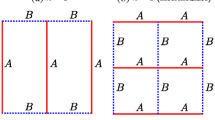Abstract
Genetic algorithms are a powerful tool for the solution of combinatorial problems such as the actuator placement problem. However, they require a large number of analyses with correspondingly high computational costs. Therefore, it is useful to tune the operators and parameters of the algorithm on simple problems that are similar to more complex and computationally expensive problems. The present paper employs an easy-tocalculate measure of actuator effectiveness to evaluate several genetic algorithms. Additionally, the effects of population size and mutation rates are also investigated for a problem of placing actuators at 8 of 1507 possible locations. We find that even with the best of the algorithms and with optimum mutation rates, tens of thousands of analyses are required for obtaining near optimum locations. We propose a procedure that estimates the effectiveness of the various locations and discards ineffective ones, and find it helpful for reducing the cost of the genetic optimization.
Similar content being viewed by others
References
Bäck, T.; Schwefel, H.-P. 1993: An overview of evolutionary algorithms for parameter optimization.Evolutionary Computation 1, 1–23
Chen, G.-S.; Bruno, R.J.; Salama, M. 1991: Optimal placement of active/passive members in structures using simulated annealing.AIAA J. 29, 1327–1334
Holland, J.H. 1975:Adaptive in natural and artificial systems. Ann Arbor: The University of Michigan Press
Kincaid, R.; Bloebaum, C. 1993: The damper placement problem for the CSI-phase I evolutionary model.AIAA-93-1655-CP, Proc. AIAA/ASME/ASCE/AHS/ASC 34th Structures, Structural Dynamics and Materials Conf., AIAA/ASME Adaptive Structures Forum (held in La Jolla, CA)6, 3086–3095
Le Riche, R.; Haftka, R.T. 1993: Optimization of laminate stacking sequence for buckling load maximization by genetic algorithm.AIAA J. 31, 951–956
Nagendra, S.; Haftka, R.T.; Gürdel, Z. 1993: Design of a blade stiffened composite panel by a genetic algorithm.AIAA-93-1584-CP, Proc. of AIAA/ASME/ASCE/AHS/ASC 34th Structures, Structural Dynamics and Materials Conf. (held in La Jolla, CA)4, 2418–2436
Onoda, J.; Hanawa, Y. 1993: Actuator placement optimization by genetic optimization and improved simulated annealing.AIAA Journal 31, 1167–1169
Padula, S.L.; Sandridge, C.A. 1992: Active strut placement using integer programming for the CSI evolutionary model.Proc. 4th Symp. on Multidisciplinary Analysis and Design
Ponslet, E.; Haftka, R.T.; Cudney, H.H. 1993: Optimal placement of actuators and other peripherals for large space structures. In: Bendsøe, M.P.; Mota Soares, C.A. (eds.)Topology design of structures, pp. 135–144. Dordrecht: Kluwer
Radcliffe, N.J.; George, F.A.W. 1993: A study in set recombination.Proc. 5th Int. Conf. on Genetic Algorithms (held at the University of Illinois at Urbana-Champaign), pp. 23–30. San Mateo, CA: Morgan Kaufmann Publishers
Rao, S.S.; Pan, T.S.; Venkayya, V.B. 1991: Optimal placement of actuators in actively controlled structures using genetic algorithms.AIAA J. 29, 942–943
Author information
Authors and Affiliations
Rights and permissions
About this article
Cite this article
Furuya, H., Haftka, R.T. Placing actuators on space structures by genetic algorithms and effectiveness indices. Structural Optimization 9, 69–75 (1995). https://doi.org/10.1007/BF01758822
Received:
Issue Date:
DOI: https://doi.org/10.1007/BF01758822




